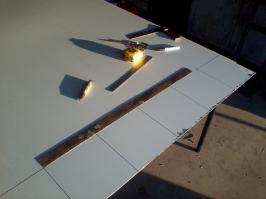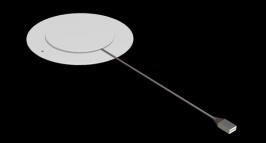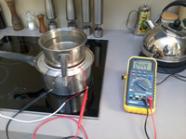Emergency power generator
In the wake of the Christchurch earthquake there have been numerous stories that show the determination of people to solve the myriad of problems the disaster created.
For St Thomas of Canterbury College Technology students James Agnew, Sam Mackwell, Stephen Pilton, Andrew Coburn, Craig Stanton, and Sean Feast the hundreds of people left without power throughout the city provided the inspiration to develop a useful method of generating electricity without mains power.
As part of the Young Enterprise Scheme (YES) the boys formed the company Advanced Clean Energies (ACE) to develop and manufacture their non-profit outcome they called "The Lion". The Lion is a device that uses the energy from boiling water heated on a fire or gas stove to generate enough electricity to charge a mobile phone or similar device.
"We wanted to create a product that would help people in times of adversity and emergency situations," explains team captain James Agnew. "We saw there were homes without power, and people had to keep taking their mobile phones into malls and shops to get charged. So, we thought if we could design a product that could charge mobiles at home while doing another application such as boiling water, then it would save people having to travel out to other areas. So, that was our market research, we saw there was a need for a product that would do that."
The results of a short survey at school also gave the idea some support and the team began developing an initial brief for a product that would be placed directly in a heat source to generate an electrical charge. However, an early prototype revealed some serious drawbacks.
"The original prototype was a closed capsule that you put directly onto the fire, but without anything cooling it you got a pressure build-up and that wasn't a safe device to use. So, we refined the device so that you place it on top of a heat source with something on top that would cool it, with the temperature difference creating the electricity," says James.

Marking up the sheet.
The ACE team went back to the design stage, first organising a consultation with the design team from the local outlet of outdoor store Kathmandu, who immediately saw added potential for The Lion in outdoor pursuits and suggested using lightweight materials in its construction.
With this advice, the team developed a second design over the following weeks.
"I think we got through about 20 prototypes until we got to the final design. So, it took us a while to be satisfied with it as we kept making small adjustments."
The final prototype consists of two thermo-electric modules, sourced by their team's production manager and science expert Sam Mackwell, whose dedication and knowledge played a huge role in the success of The Lion's development. The modules are sandwiched between bottom and top aluminium plates, which Chris describes as "looking a little like a UFO." The simplicity of this construction has made it both simple to produce and use, providing an efficient, simple, and inexpensive method of generating electricity.
"To generate power with The Lion you put the bottom aluminium plate on top of your pot of boiling water like a lid and then put a smaller pot of cold water on top of that. The difference between the temperatures of the top and bottom plates is converted by the Thermo Electric modules into electricity which you can then use to power a phone, lights, or a similar device."

Lion panel
Confident that their design was a winner, the team went into production in Sam's garage, creating an initial run of ten that were then showcased at a grand opening in the school hall. Kathmandu and Mitre Ten Mega were also happy to let the team hold demonstrations in their stores and the team found the public reaction to what they had achieved extremely gratifying.
"When people asked if we'd had any help and we said 'we did it ourselves', they were really impressed," says James. "And it's so satisfying to hear that people think we have done so well."
The Lion's potential success within the market was also confirmed as all ten units from the team's first run sold out almost immediately. The success of The Lion has been about more than just making a marketable product however.
"The biggest thing we wanted to stress was that we aren't out to exploit the market of people in disaster-relief zones, because they are already having a hard time. So we tried to keep costs really low. And because The Lion has applications in developing countries, we decided to send one to our sister school in Tanzania. So that fitted in with our social enterprise model really well," says James.
James explains that the team has gained an enormous amount from this project: from fundamental business and communication skills to public speaking and time management.
"We've also found that just because we come from a disadvantaged area due to the earthquake, that doesn't mean we can't compete. So the courage and ability to go on through adversity has been another big thing we've learned."
The ACE team plans to keep producing the unit and James explains that a patent is currently being processed.
The success of this project has resulted in the ACE team taking top Lion Foundation Young Enterprise Scheme prizes for the Canterbury region, including the innovation award, best overall team, and best student for James. The boy's Technology teacher, David Ivory, also took the award for best Canterbury teacher. James is also one of the five teenage finalists in line for the inaugural New Zealand Institute of Chartered Accountants (NZICA) Young Managing Director of the Year Award in the annual Lion Foundation Young Enterprise Scheme National Awards, held in Wellington in December 2011.

